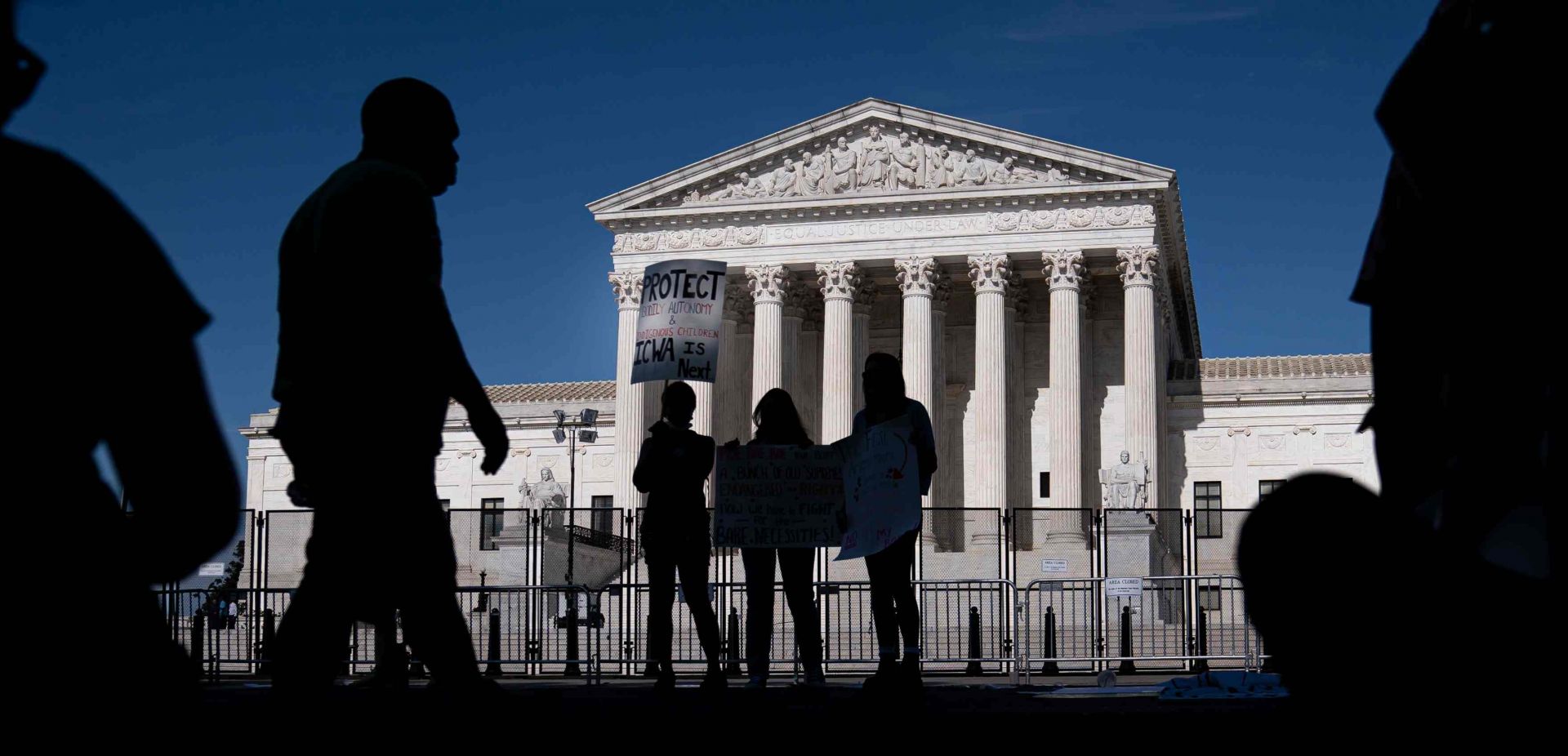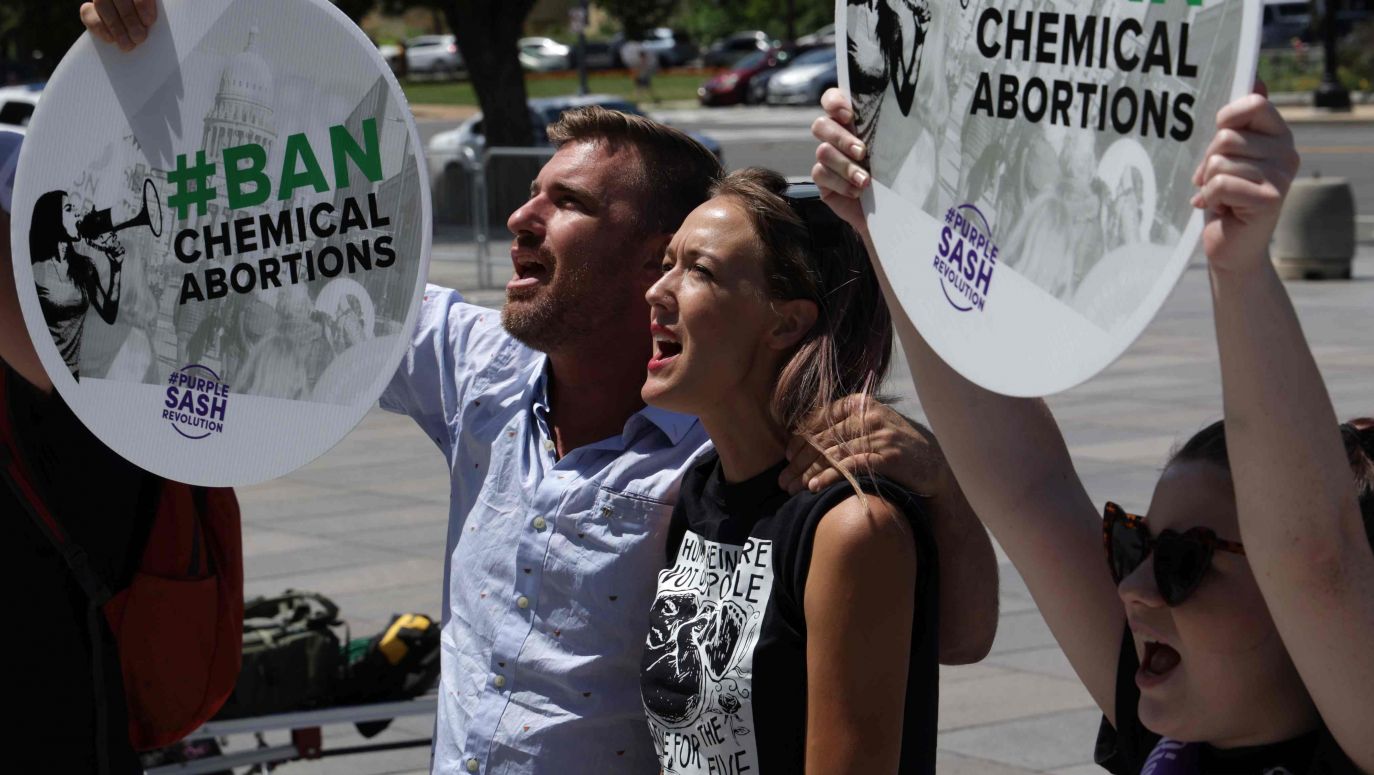Red (where the Republicans are in power) or blue (the traditional colour of the Democratic Party)? The progressive East and West Coasts, where the liberal elites reside? Or rather, what is in the middle, maliciously referred to by leftists as "that thing in between" or the "fly zone" on the route between Los Angeles or San Francisco and New York or Boston. Last week's US Supreme Court decision on abortion has only intensified the growing divisions between the states of the American republic.
The United States is beginning to look more and more like two divided and divergent territories, governed by two political parties that are fiercely opposed to each other. Parties guided by two distinct world views that seem to have less and less in common. These two radicalising socio-political camps seem to be taking up all the space of information and debate in the age of social media, which, guided by algorithms, amplify the most radical attitudes and views. In between the two camps is the shrinking political centre, occupied by so-called normals, i.e. people who are not guided by a political worldview on a daily basis.
Do they still have anything in common?
Shortly after the US Supreme Court decision abolishing - in force since the 1973 SC ruling - the - "Constitutionally guaranteed" right to abortion and returning to the states the right to decide on this issue, a new map of America was shown in the US media. It marked state regulations on the permissibility of abortion. The Democratic-dominated West Coast and the north of the East Coast and the two islands in the middle (Colorado and Illinois, where Chicago is located) - in green, because there the 'right to abortion is guaranteed'. The rest are different shades (brown, orange, yellow), depending on the restrictions. In nine states (Alabama, Arkansas, Kentucky, Missouri, Oklahoma, South Dakota, Alabama, Ohio, Texas and Tennessee), "most abortions are already prohibited". In others (Idaho, Mississippi, North Dakota, Arizona, Georgia, Iowa, Michigan, North Carolina, West Virginia and Wisconsin), access to abortion "may be banned" or "significantly restricted".
 SIGN UP TO OUR PAGE
SIGN UP TO OUR PAGE

As if this were not enough, the governors of the liberal states of the West (led by California, the most left-wing in the US) and New York have announced that they will not cooperate with states where abortion is illegal in their search for women who have had abortions. At the same time, they encouraged all those in need to come to them for abortions.
Interestingly, on Thursday, a similar map prepared after the Supreme Court's conservative majority ruling lifting New York State restrictions limiting the right to bear arms outside the home was shown. As Justice Clarence Thomas stated in his reasons for the ruling, the exercise of the constitutional right to carry firearms in public for self-defence "does not require that individuals demonstrate any special need". This invalidated restrictions imposed not only by New York, but also by six other Democratic-ruled states (including California). If the state results of the last presidential election were superimposed on this map, it would again not differ much from the map determining the degree of acceptance of abortion and free access to firearms.
Abortion, access to firearms, attitudes to religion and prayer in public places, the threat of climate change treated like a religion, the rights of minorities of all kinds, full accessibility to so-called soft drugs, action to reduce police department budgets and liberalise penalties for criminals... There are growing cracks on the US federal political project.

 SIGN UP TO OUR PAGE
SIGN UP TO OUR PAGE
 As if this were not enough, the governors of the liberal states of the West (led by California, the most left-wing in the US) and New York have announced that they will not cooperate with states where abortion is illegal in their search for women who have had abortions. At the same time, they encouraged all those in need to come to them for abortions.
As if this were not enough, the governors of the liberal states of the West (led by California, the most left-wing in the US) and New York have announced that they will not cooperate with states where abortion is illegal in their search for women who have had abortions. At the same time, they encouraged all those in need to come to them for abortions. 








